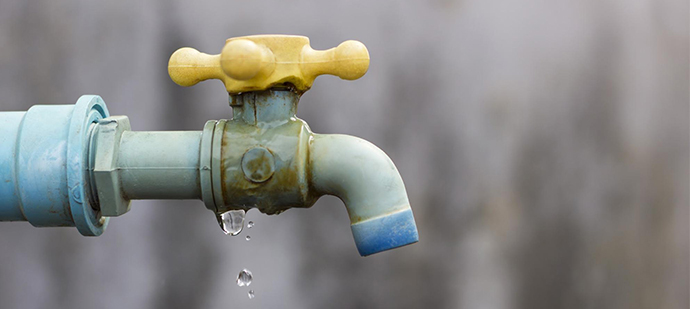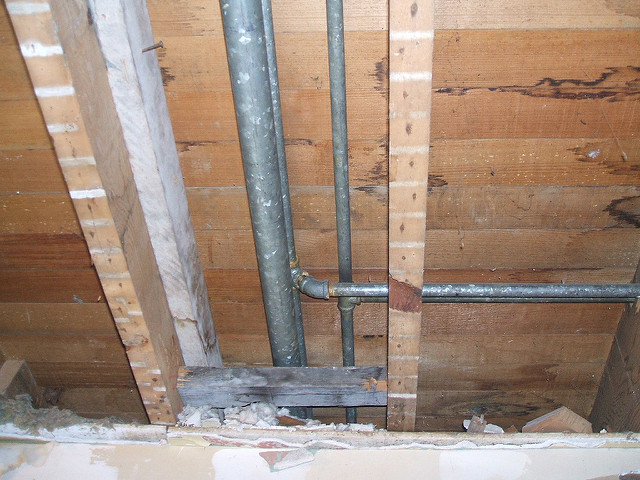Six Tested Strategies for Detecting Hidden Water Line Leaks
Six Tested Strategies for Detecting Hidden Water Line Leaks
Blog Article
Nearly everybody maintains their personal piece of advice involving Hacks to detect leaks.

Early discovery of dripping water lines can minimize a potential catastrophe. Aside from saving you cash, it will minimize the worry and stress. The moment you locate a leak, calling your plumber for fixings is the most effective solution. Nonetheless, some tiny water leaks might not be visible. Below are some hacks that help if you can not discover it with your nude eyes.
1. Examine the Water Meter
Checking it is a surefire way that helps you uncover leaks. If it moves, that shows a fast-moving leakage. This indicates you may have a slow leak that can also be below ground.
2. Examine Water Usage
If you find abrupt modifications, despite your usage being the same, it suggests that you have leakages in your plumbing system. A sudden spike in your costs suggests a fast-moving leakage.
On the other hand, a stable boost every month, despite having the same behaviors, shows you have a slow-moving leak that's additionally slowly rising. Call a plumber to thoroughly examine your residential property, especially if you really feel a warm area on your flooring with piping underneath.
3. Do a Food Coloring Examination
30% comes from bathrooms when it comes to water intake. Test to see if they are running effectively. Drop flecks of food color in the storage tank as well as wait 10 minutes. If the shade in some way infiltrates your bowl during that time without flushing, there's a leakage in between the storage tank and bowl.
4. Asses Exterior Lines
Don't neglect to check your outdoor water lines as well. Examination faucets by attaching a yard tube. Should water leak out of the link, you have a loosened rubber gasket. Change this and also ensure all connections are tight. If you have actually got a lawn sprinkler, it will certainly aid get it professionally examined and preserved every year. One little leak can lose lots of water as well as surge your water expense.
5. Evaluate the situation and inspect
Homeowners need to make it a practice to check under the sink counters and also inside closets for any type of bad odor or mold growth. These two warnings suggest a leakage so punctual interest is required. Doing routine inspections, also bi-annually, can save you from a major problem.
Inspect for discolorations as well as damaging as a lot of home appliances and also pipelines have a life expectations. If you presume leaking water lines in your plumbing system, do not wait for it to rise.
Early detection of dripping water lines can mitigate a prospective disaster. Some small water leaks might not be noticeable. Checking it is a surefire means that assists you discover leaks. One little leak can lose heaps of water and increase your water costs.
If you believe leaking water lines in your plumbing system, don't wait for it to rise.
How to Know If Your Home Has a Hidden Leak
Water Meter Reveals Inexplicable Water Usage
If you’d like to test whether or not there’s a leak somewhere in your home, you can do this using your water meter. Here is how to conduct the test:
Don’t use any water in your home for at least 30 minutes; this also means not turning on faucets or water-using appliances.
Go outside, and check your water meter for activity.
If your water meter shows that there was activity, even though no one was using any water, this proves that there is a leak in your home.Visible Mold or Mildew Growth
Leaks behind walls create moist, dark environments that allow mold and mildew to grow and thrive. Eventually, you might see mold growth forming on the wall closest to a hidden leak.
If mold is growing in an area that receives a high amount of moisture, such as a bathroom, it may simply be an indication that better ventilation is needed. However, if you see mold growth on a wall or the ceiling in an area where you would not expect, you probably have a hidden leak.
Musty, Mildew Odor
Sometimes you might not be able to see the mold or mildew that is growing as a result of a leak. However, the smell can give the problem away just as easily. If you catch a whiff of something musty, there’s a good chance that old water is collecting somewhere in your home that you can’t see.
Stained/Warped Walls, Ceilings, or Floors
When your home soaks up water, a variety of red flags can become visible, including ceiling stains, bubbling drywall, warped walls, and sagging floors. While these issues can be caused by excess humidity, they can also be signs that a pipe or plumbing connection has started leaking behind your walls.
Inexplicably High Water Bill
After a while, you get a general sense for what your water bill should be. If you own a pool or sprinkler system, your bill will tend to be higher during summer. However, if you receive a water bill that seems especially high, and you can’t figure out what caused it, then you may have a hidden leak somewhere that’s increasing your bill.
https://www.plumbingjoint.com/blog/2019/july/how-to-know-if-your-home-has-a-hidden-leak/

I stumbled upon that page on Locating water leaks when exploring the web. Do you know about anybody else who is occupied with Locating water leaks? Do not hesitate to share it. Thank-you for taking the time to read it.
Immediate relief? Contact. Report this page